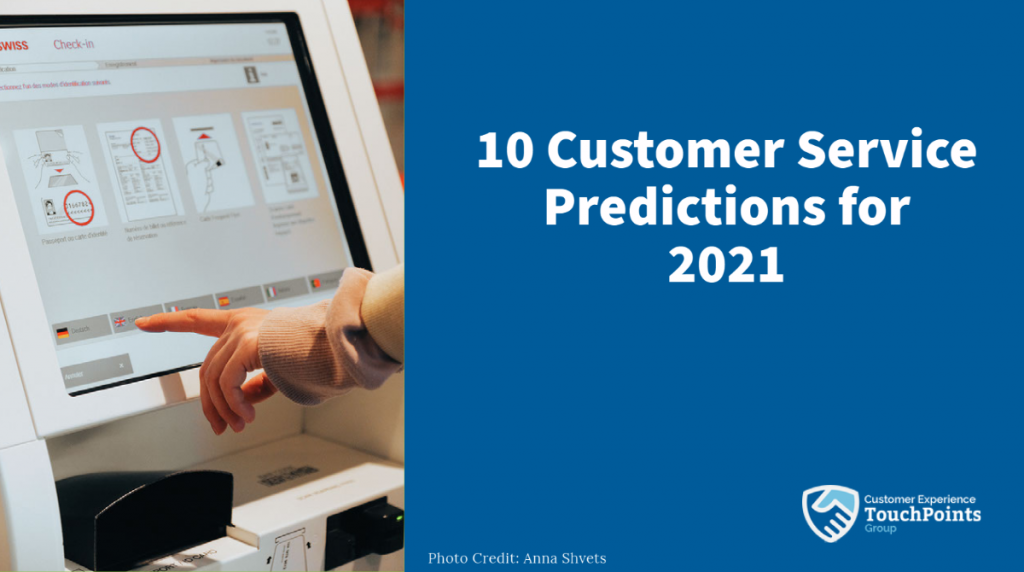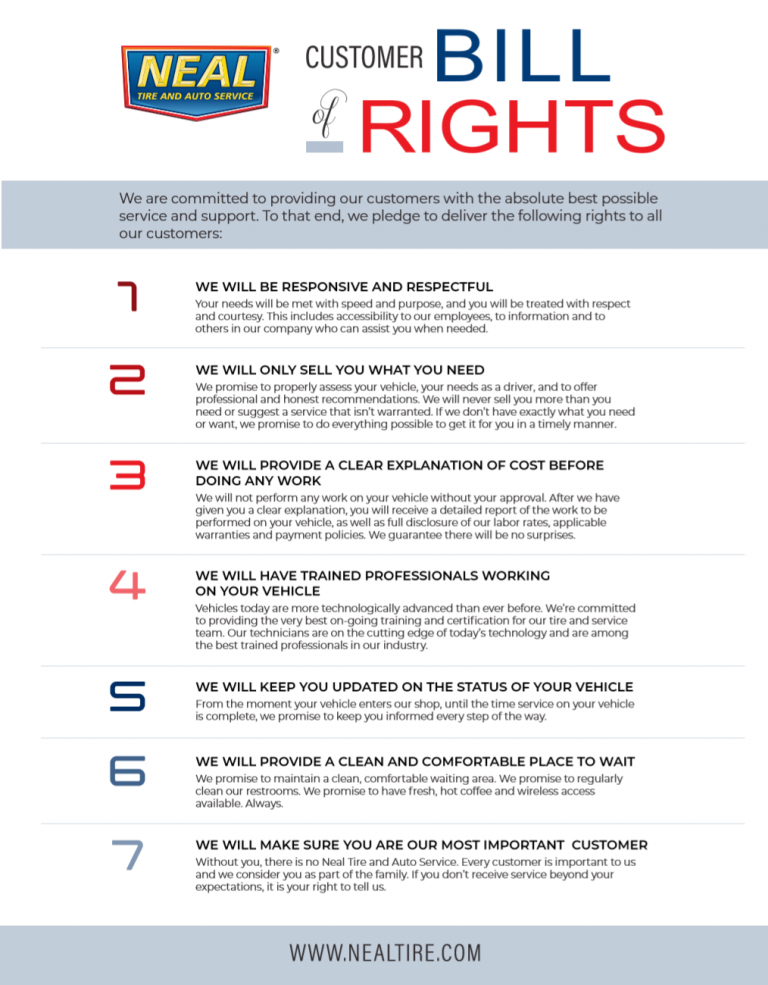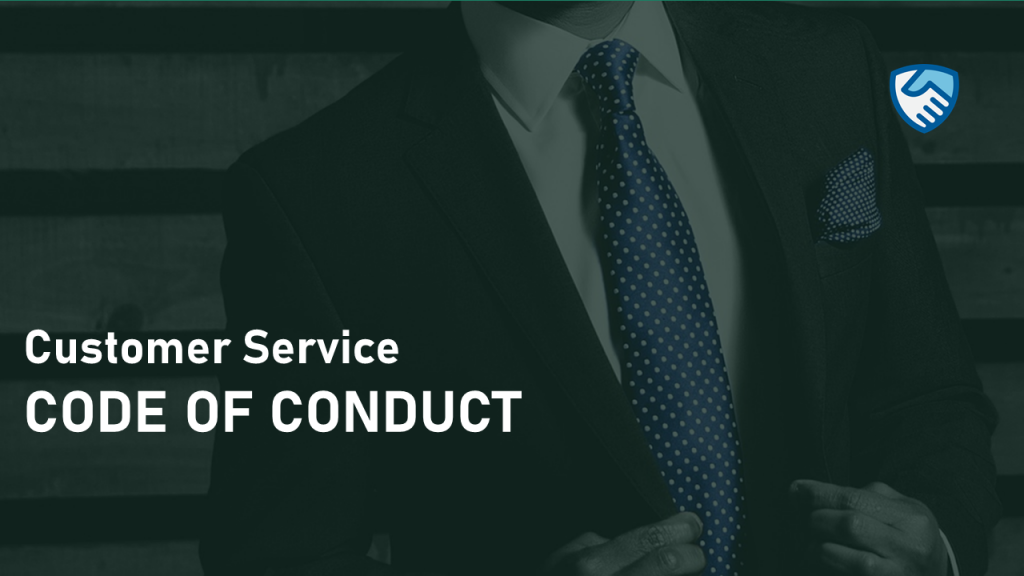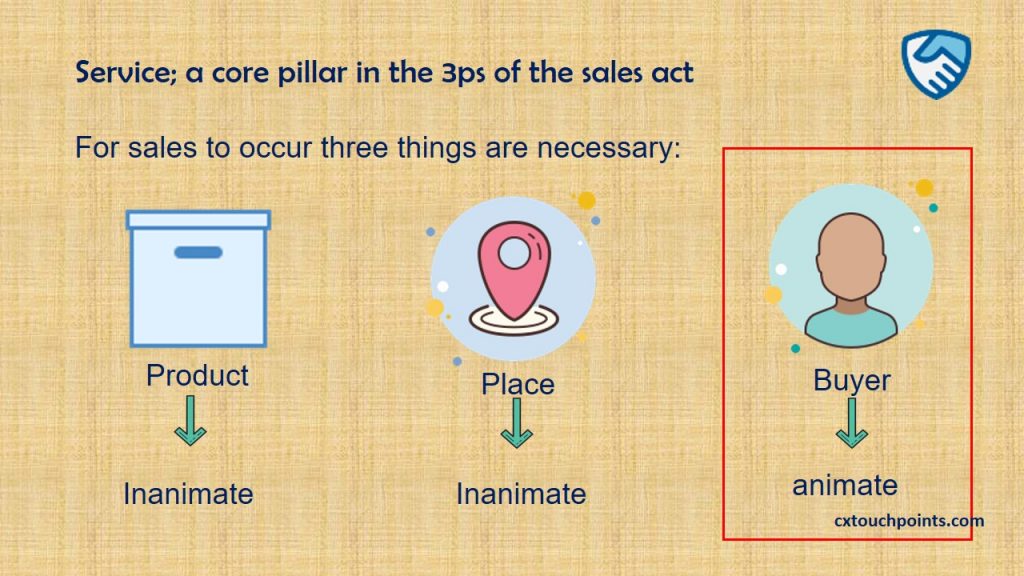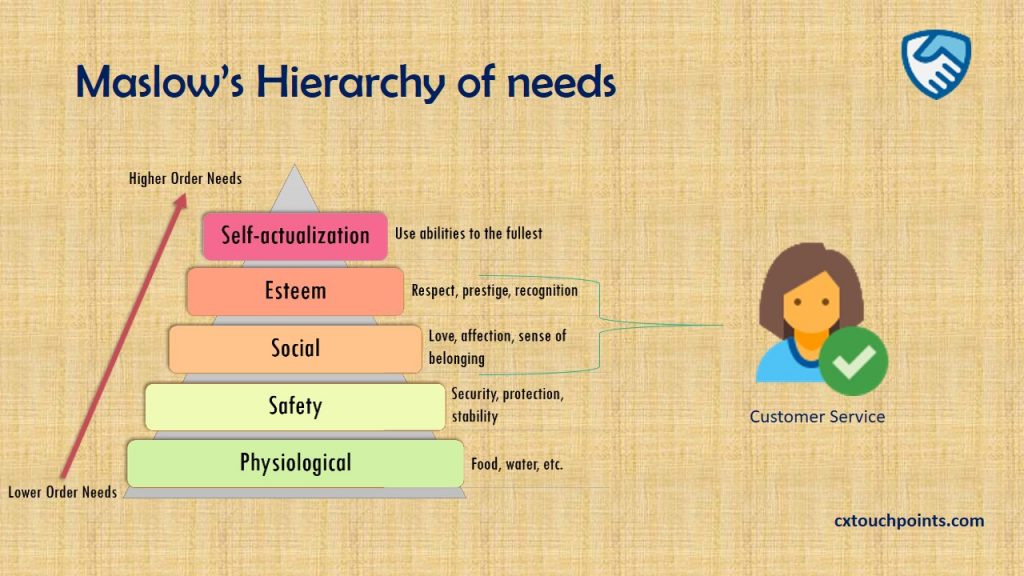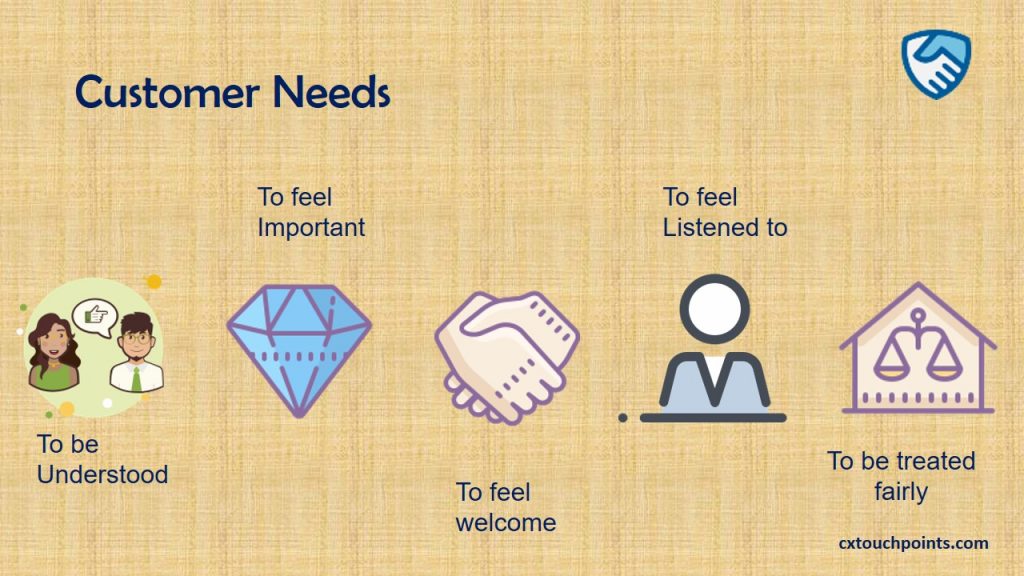10 Customer Service Predictions for 2021
If 2020 was to be given a name or a theme, we all will agree that name will be ‘the extraordinary year’. One in which the world experienced a major transformation in its regular way of life. Long-standing traditions were broken, new economic policies were introduced and there was no textbook strategy for how best to handle the global pandemic the world experienced. This shock did not end in the health sector, it changed the way we do business, it changed customer expectations and needs. We can confidently say it created a new reality. We can no longer talk of a return to normal but an adaptation to the new normal. These changes have created new customer service trends. Here are our 10 customer service predictions for 2021.
- Increased focus on Quality as a key Satisfaction determinant.
- The shift of digital engagement from the web to mobile applications.
- Focus on Touchpoints Analysis for optimal allocation of resources.
- Increased attention to touchless, self-service and remote service.
- Focus on internal customer experience as a tool to shape new corporate cultures.
- Decentralisation of the customer service function, with customer service becoming an integral part of every employee’s job description.
- Customer service bill of rights becoming more transparent, visible and obligatory.
- Shift to inferred feedback collections tools, by harnessing the power of cookies, sentiment analysis and AI.
- Multiplicity of customer experience management frameworks with an increased focus on academic customer experience research.
- Focus on digital skills as a key customer experience competence for employees.
Let us look at these in detail:
1. Increased focus on Quality as a key Satisfaction determinant.
Quality is an important factor in global competition. With increasing competition and demand by customers for better quality, organizations now realize that it is imperative to provide quality products and services if they must remain competitive in the marketplace. This explains the substantial investments in Total Quality Management Strategies. These strategies permit organisations to deliver products and services that align with customer needs, are better, cheaper, faster and more efficient than those offered by the competition, with the participation of everyone in the organisation from top to bottom. (Dilber et al. 2005)
We forecast that in 2021, quality will take a central stage in customer valorisation of products and services. The existing health crisis has reminded people of the need for clean, safe and reliable products and services. This shift in customer expectations is accelerated by technological advancements that have made it easier to compare products and tap into the feedback of other users when making a purchase decision. While warmth in service remains important, quality will supersede warmth.
To remain competitive and customer-centric, organisations will need to review their approach to quality. This can be achieved by:
- Ensuring that each employee is responsible for the quality of the products and services offered to customers and plays an active role in the output obtained.
- Understanding that quality is determined by customers and as such putting in place the necessary mechanisms to capture and use customer feedback.
- Putting in place a culture of continuous improvement and empowering employees to find new ways of delivering better quality to customers.
- Putting in place control mechanisms that measure the attainment of set objectives, identify gaps and quickly resolve them.
2. The shift of digital engagement from the web to mobile applications.
A recent Gartner study reveals that employee and customer interactions have changed in a significant and permanent manner. It has become more mobile, virtual and distributed. In 2019, Gartner projected that Mobile apps will have the most impact on business success by 2020. A 2020 Statista research reveals that as of the 3rd quarter of 2020 there were over a 2,87million apps on Google Play and 1.96 million available apps for iOS. Though the web browser is still a popular touchpoint, mobile applications are on the rise and provide more personalised interactions with customers.
More and more organisations are rolling in mobile applications to complement their websites. These mobile applications enhance customer relationships, personalises the service offered to each customer, eases the collection of feedback, eases customer support and provides more user data. In 2021 we forecast that the shift to mobile will be more visible as organisations seek more personalised avenues to create value for their customers.
3. Focus on Touchpoints Analysis for optimal allocation of resources.
In the early 1980s the president of Scandinavian Airlines Jan Carlson asserted that; any time a customer comes into contact with a business, however remote, they have an opportunity to form an impression. This impression he defined as a Moment of Truth. Impressions customers create about an organisation as they come in contact with this organisation at different contact points (Touchpoints).
The concept of customer touchpoints has since then been extensively diagnosed by researchers seeking better ways of improving customer experience. Today, most organisations can identify the different touchpoints in their interactions with customers. However, classifying these touchpoints in order of importance or impact and allocating resources more efficiently is still a puzzle to be resolved.
Aichner & Gruber in a 2017 research on managing customer touchpoints, observe that even though every customer touchpoint plays an important role in customer satisfaction or dissatisfaction, businesses usually have limited human and capital resources and must set strategic priorities and allocate their budget to some activities. This, therefore, requires a detailed customer touchpoints analysis to help determine the most valuable customer touchpoints and provide valuable insights for these strategic decisions.
We expect that in 2021, there will be more focus on touchpoints analysis. This will lead to the development of new models and management frameworks in this focus area.
4. Increased attention to touchless, self-service and remote service.
The first lesson everyone learned in the advent of COVID-19 was that we must avoid greeting each other through handshakes and keep safe distances. Through the year customers and employees became acquainted with the touchless service. This shifted a lot of technological research to how we can continue serving customers and meeting their needs in a touchless economy.
A good example is the technology giant NEC which developed a solution called Smart Guest check-in solution, that respects industry health and safety standards by enabling a touchless interaction. The solution does not only reduce waiting time but also unnecessary contact between guests and hotel staff.
During the 2020 pandemic, Chinese retailers developed a touchless retail system. Creating a new way of serving customers while making virtual all customer service that was previously physical. With touchless retail, products are commanded through smartphones, payments done through smartphones, robotics and automation used in order fulfilment with minimal human intervention and automated drop-off or pick up stations created in buildings or communities.
While we see these as measures put in place to cope with the pandemic, these innovations have come to stay and are creating new customer needs and expectations. The post COVID era beginning from 2021 will see a progression in such touchless technologies which will improve and promote self-service and remote customer interactions.
5. Focus on internal customer experience as a tool to shape new corporate cultures.
Culture according to the Harvard Business Review expresses the organizations ‘ goals through beliefs and values. It guides the activities performed by the entire team through shared assumptions and group norms. It is anchored in unspoken behaviours, social patterns and mindsets.
Corporate culture creates an attitude alliance. We can describe it as the attitude of the company. It is what the customer feels as he/she interacts with an organisation. Culture shapes the service attitude, defines how far employees are willing to go to assist customers and situates the value of customers to the members of an organisation.
One way to put in place a customer-centric culture is through the active involvement of leadership in building great internal customer experiences. Creating an environment where employees feel happy to work, feel supported by management and feel like active stakeholders whose contributions are recognised and whose actions are responsible for the success of the organisation.
In 2021, we foresee a greater involvement of the HR function in creating better employee experiences. Customer service will become a core objective of the HR department, with a focus on shaping the corporate culture through improved internal customer experiences.
6. Decentralisation of the customer service function, with customer service becoming an integral part of every employee’s job description.
The customer service department and function like we have known will no longer exist. We project a decentralisation of the customer service function within the organisation in 2021.
- Customer Service at the heart of operations: Technological advancements have changed the way customers interact with companies, from the processing of customer requests, to production of goods and services, down to order fulfilment and post purchase interactions, there is increased attention on customer experience. With the need for personalisation, speed, and ease of use among others. The ability to meet and exceed customers ‘ needs is at the centre of most business operations today.
- Customer service at the heart of HR: The responsibility for customer satisfaction is shifting to the HR department. This begins with the selection of culture fit employees, training and internal customer experiences. The ability for employees to continuously deliver winning customer experiences depends largely on their training and personal competence. The ability for the HR department to monitor gaps in employee skills and attitudes directly affects the service they will deliver and impacts the overall customer service culture.
- Customer service on the board: More and more organisations now realize that the absence of a customer service champion on the board is a major handicap to the organisation. The customer service strategy must be defined at the supreme organ of the organisation and the departmental objectives derived from it. The overall objective of the organisation is to satisfy its stakeholders ‘ needs. To meet stakeholder needs, achieving superior customer experience and satisfaction is the surest way to create sustainable value for the customers and the organisation.
We project that in 2021 there will be a higher decentralisation of the customer service function throughout the organisation. Some organisations will see a complete dissolution of the customer service department and the assignment of customer service objectives to all members of the organisation. Everyone will foremost be a customer service representative then accountant, or marketer, or operations head or CEO.
7. Customer service bill of rights becoming more transparent, visible and obligatory.
A customer bill of rights is simply a set of rights you accord to your customers. Those very fundamental things your customers deserve and whose non-respect is discriminating against them or depriving them of what they are rightfully due. While this will vary from one organization to another, there are some basic rights that every organization must accord to the customers such as the right to be listened to, the right to complain if they are not satisfied with the products or services, the right to have their privacy respected and their data protected.
Many organisations already have a clearly established customer service bill of rights published on their corporate websites and in strategic positions in their offices and shops. We are predicting a shift from just wilful development of customer bill of rights to a more obligatory practice. We forecast that more professional bodies will make the publication and respect of these customer service rights obligatory.
The pressure may not only come from professional bodies and state regulators but also from customers themselves, who will tend to associate a firm declaration of customer service rights as proof of the company’s commitment to service quality. The customer service bill of rights shares the corporate culture and gives the customers points by which they can hold organisations accountable.
8. Shift to inferred feedback collections tools, by harnessing the power of cookies, sentiment analysis and AI.
Today’s customers are pouring out tons of data on how they feel about the products and services they use. Putting in place the right feedback collection tools gives an organisation the possibility to collect useful and actionable data.
There are so many ways to know what customers think about us. To begin with, feedback can be collected in 3 ways. There is direct feedback, which is asking the customers directly what they think about the services. There is indirect feedback which is learning what customers think about you through other intermediaries and lastly, there is inferred feedback that involves analysing the customer’s words, comments, and statements and determining their emotional state and feelings about us.
Today, feedback tools use web analytics, cookies, sentiment analysis and artificial intelligence, to dig into the customers’ behaviour and sentiments transforming the results into actionable data. Cookie profiling does not just occur when you are on a particular website but the whole time you are browsing.
We forecast that 2021 will be marked by the blending of cookie profiling with sentimental analysis from social media to create clear actionable data on the state of the customer. Feedback collection will go beyond simple feedback forms, NPS and CSAT scores to a more data-driven approach.
9. Multiplicity of customer experience management frameworks with increased focus on academic customer experience research.
Just like Colin Shaw expresses his surprise at the massive wealth of academic data on customer experience that does not get used. The question as to why this research remains untapped by practitioners is still a call for concern.
Academicians are beginning to delve more into customer experience research. Becker & Jaakkola posit that for the past decade, customer experience has enjoyed remarkable attention in both marketing practice and research. The increased academic call for research in customer experience has resulted in a dramatic increase in academic publications and significant advancements in scholarly understanding of customer experience.
Despite this abundance in research and publications and the conviction by business leaders that mastery of customer experience is key to competitiveness, most scholarly research is still unused in organisations. We forecast that there will be a major shift in the way in which the products of scholarly research in customer experience are used in the development of new customer experience strategies and technologies.
We expect more corporate leaders to translate the products of academic research into actionable strategies for their firms. Consultancy firms will likely take the lead in this area. We also forecast a simplification of these publications to language that is easier for business by authors and bloggers.
10. Focus on digital skills as a key customer experience competence for employees.
As new technologies continue to evolve, the customer service function keeps changing rapidly. This has been accelerated by the 2020 health pandemic that has imposed the shift to the use of technologies throughout the supply chain. Irrespective of the industry the 2020 global health pandemic sent a strong message on the need to gain more digital skills if an employee must remain competitive in the job market.
We forecast that in 2021 a lot of training and development will be geared towards preparing employees for digitalisation efforts and giving them competencies to serve the digital customer.
Conclusion
These 10 customer service predictions for 2021 are not an exhaustive list of what we predict will shape customer service in 2021 but the most significant changes we forecast will happen. While their occurrence may be to a lesser or greater extent than forecasted, our team at CX Touchpoints Group continue to watch these trends accompany our partners and clients in their customer experience transformation efforts.
Editor: Mbinkar Kpunsa Fomunyuy
Customer Experience Consultant & Author
10 Customer Service Predictions for 2021 Read More »

